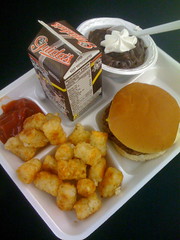Many folks, rightly so, are concerned about the quality of food that our public schools serve. A somewhat related problem is the amount of food (think gooey vegetables or rubbery fried fish) that’s thrown out.
To help understand exactly what schools discard, the Minnesota Pollution Control Agency just published a major study on the topic.
Volunteers in Minnesota sorted through six schools’ garbage and recycling–two each at the elementary, middle and high school levels–sorting items into 19 categories. The result of those findings is “Digging Deep Through School Trash.”
 While the study isn’t on food waste, specifically, there’s plenty of insight on the topic. “Digging” found that food was the single largest material generated by schools, amounting to 24 percent of the total waste generated. That’s about double the percentage in the (regular) municipal solid waste stream!
While the study isn’t on food waste, specifically, there’s plenty of insight on the topic. “Digging” found that food was the single largest material generated by schools, amounting to 24 percent of the total waste generated. That’s about double the percentage in the (regular) municipal solid waste stream!
Overall, almost 80 percent of the school waste could be diverted from landfill. So in addition to working on reducing school waste–food and otherwise–it’s vital that schools have both recycling and composting programs. Especially in light of the finding that 47 percent of schools waste could be composted.
6 Comments